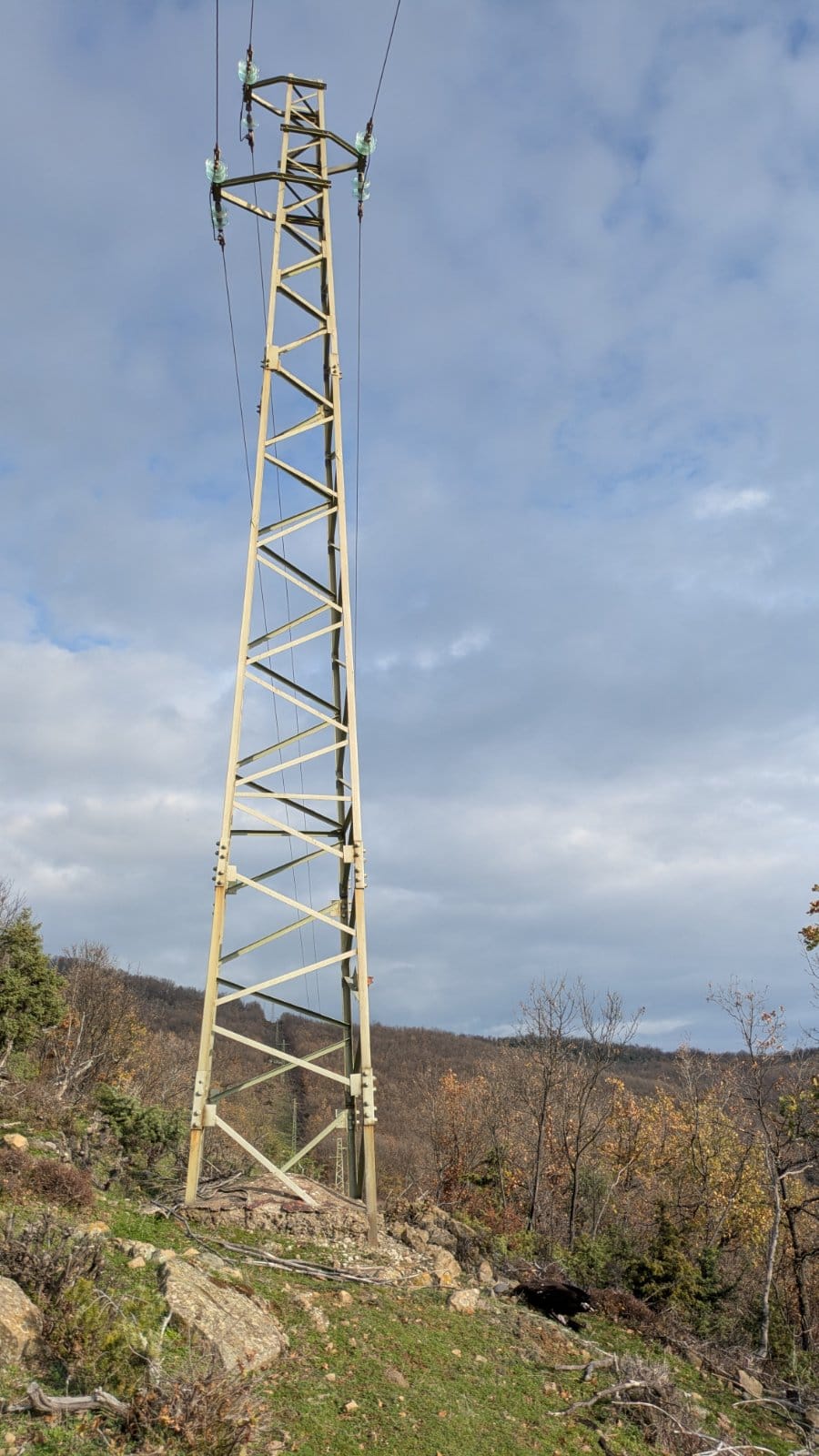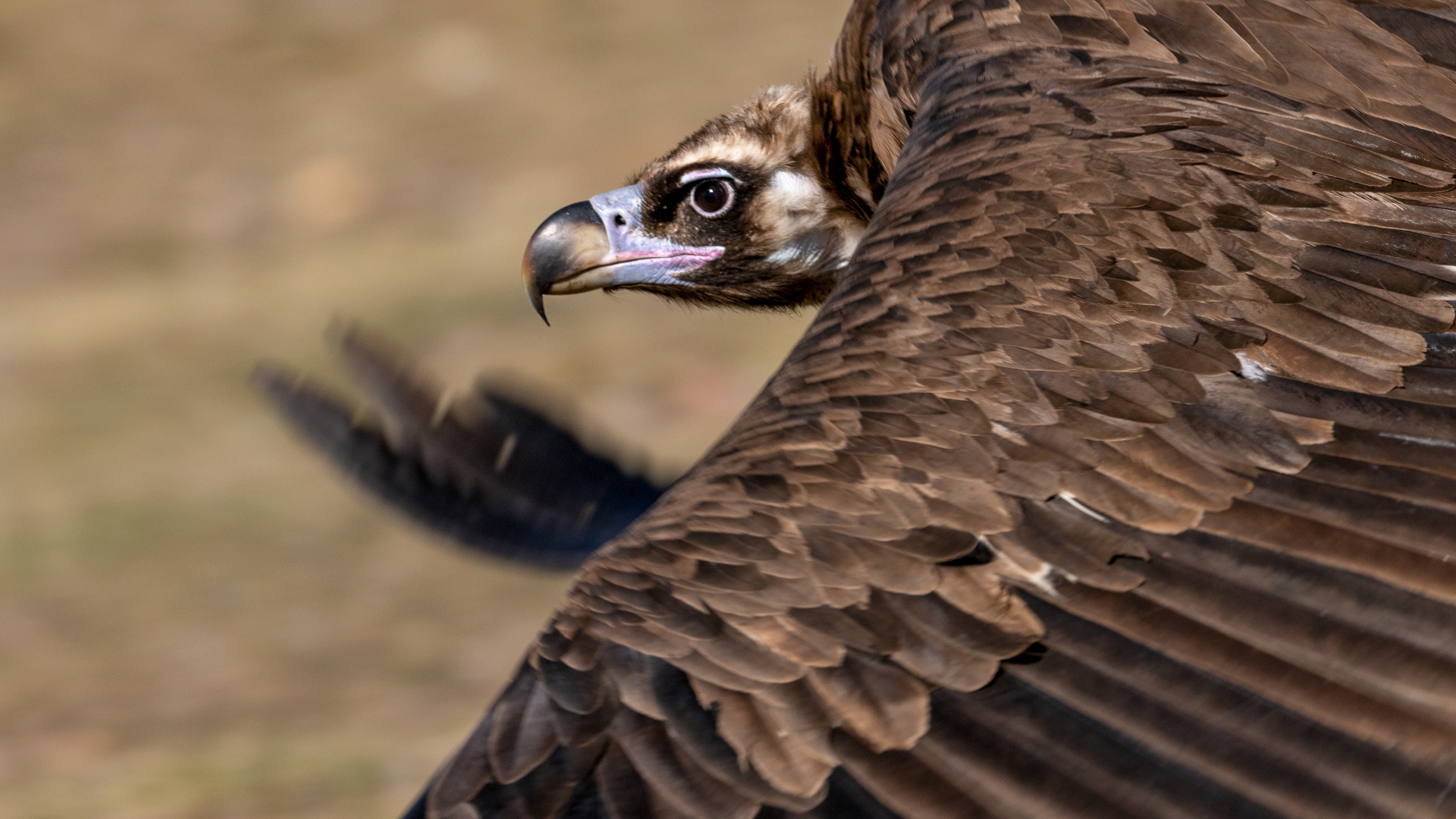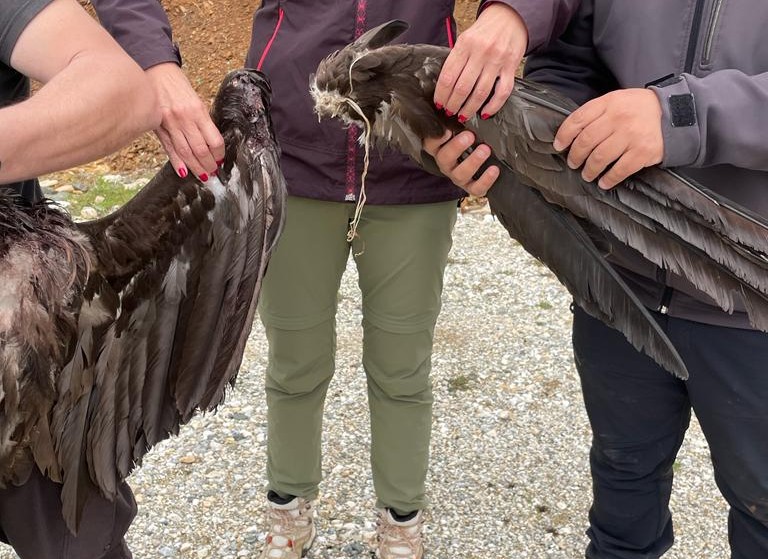In another milestone for the species’ recovery, the 2025 breeding season for Cinereous Vultures (Aegypius monachus) in Bulgaria was exceptionally successful. Out of 15 territorial pairs, 10 laid eggs, 8 chicks hatched, and 5 chicks survived to fledging — marking continued progress for the species that only a few years ago was absent from the country.
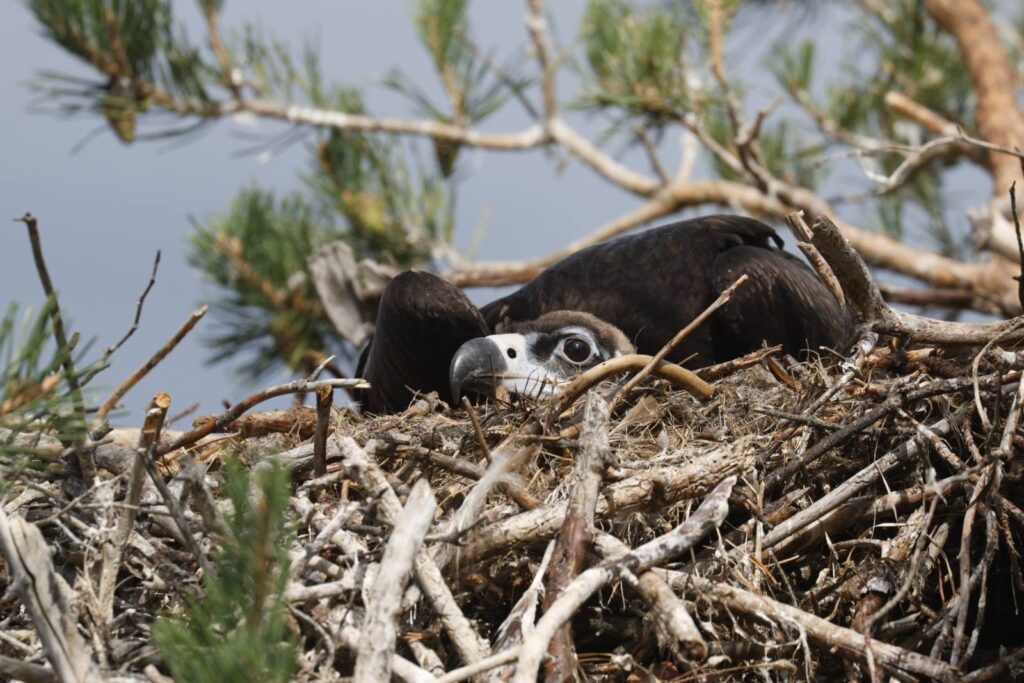
A new generation takes flight
The five fledglings hatched across three key sites — three in the Kotlenska Mountains (a record for this colony) and two in the Vratsa Balkans and Ponor. Four of the chicks were tagged and named to honour people and groups who have made significant contributions to vulture conservation in Bulgaria :
- “Emmy”, after Emilia Toncheva, Assistant and Legal Defender of Vultures
- “Nikol”, after Nikol Mitreva, Green Balkans activist
- “Woodbrother”, dedicated to the arborists who build artificial nests and ring young vultures
- “Simeonov”, named after the late Bulgarian ornithologist Simeon Simeonov
The fifth chick was intentionally left untagged because its exact age could not be determined, and tagging too early or too late could pose a risk of it falling from the nest.
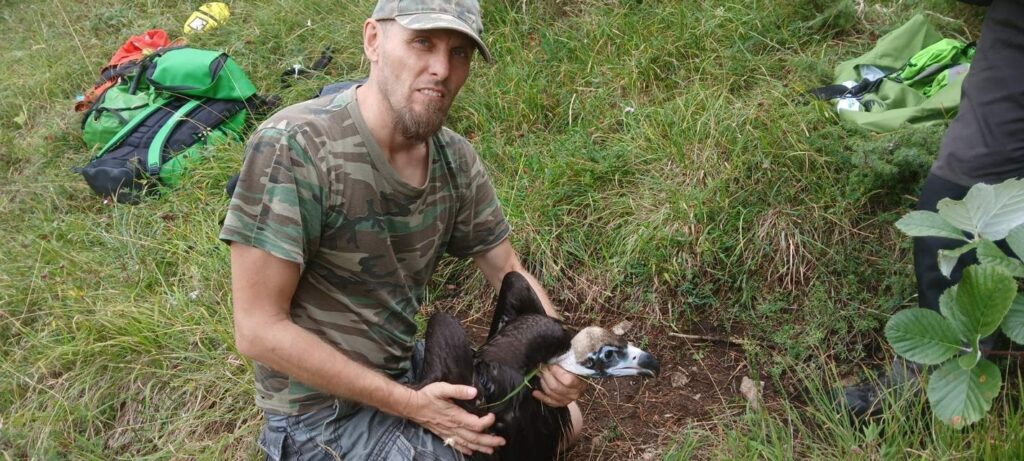
Steady growth despite some setbacks
This year’s results confirm that the Cinereous Vulture population in Bulgaria is entering a stable establishment phase. Compared to just one fledged chick in 2021, productivity has now reached five surviving young ones in 2025 — evidence that conservation measures are working and the population is becoming more resilient.
Reintroduced across several key mountain regions, including the Vratsa and Kotel Balkans, the growing number of breeding pairs reflects both suitable nesting conditions and the survival of earlier released birds.
Even though the season was very positive, not every story had a happy ending. The well-known Cinereous Vulture female Kutelka died during the breeding period, but her chick was rescued and transferred to the Green Balkans Wildlife Rescue Centre, where it continues to receive expert care.
A collaborative conservation success
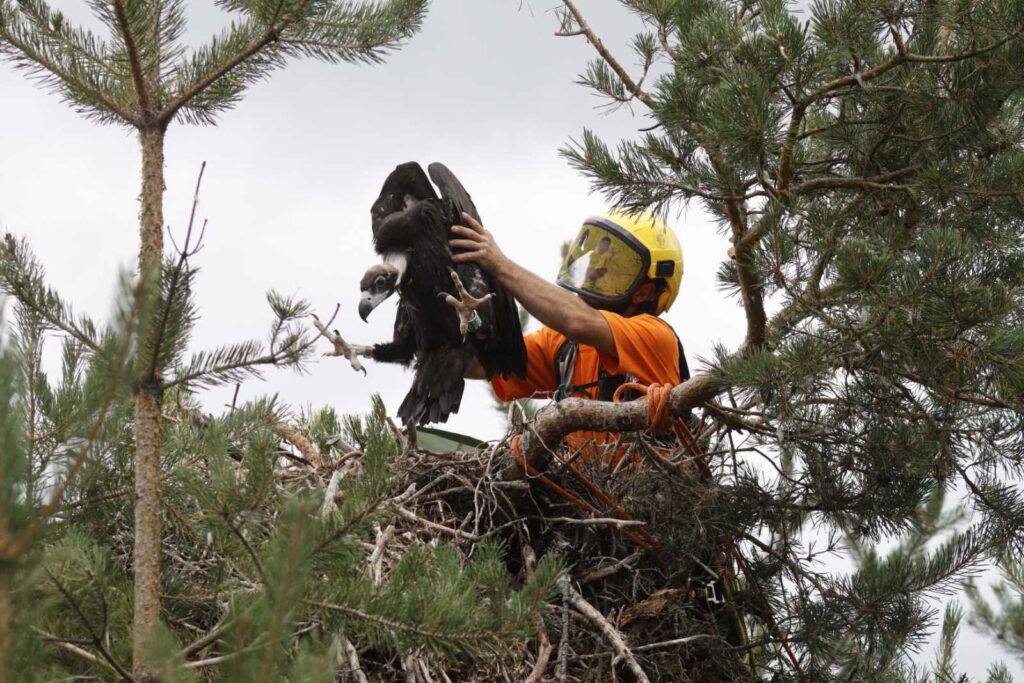
The successful return of the Cinereous Vulture to Bulgaria is the outcome of long-term efforts by Green Balkans, the Fund for Wild Flora and Fauna, and the Society for the Protection of Birds of Prey, in partnership with international experts from the Vulture Conservation Foundation (VCF) and with crucial support from the European Union’s LIFE Programme.
Since 2018, over 100 Cinereous Vultures have been released in Bulgaria through the Vultures Back to LIFE y Bearded Vulture LIFE projects. Birds came primarily from Spain, thanks to the Junta de Extremadura y Junta de Andalucía, and from the EAZA Ex-Situ Programme (EEP). The birds were quarantined and prepared for release with the support of AMUS y VCF.
Conservation teams continue to secure the species’ future by insulating power lines, combating poisoning, maintaining feeding stations, and constructing artificial nests — actions that directly contribute to improved breeding success and survival rates.
Looking ahead
Declared extinct as a breeding species in Bulgaria in 1985, the Cinereous Vulture’s comeback is a powerful symbol of what long-term cooperation and persistence can achieve. With 15 active territorial pairs now established and annual fledging numbers steadily increasing, conservationists are optimistic that the population is approaching self-sustainability.
The Bearded Vulture LIFE Project

The “Bearded Vulture LIFE” project is a comprehensive initiative, aiming to restore the Bearded Vulture and Cinereous Vulture across Bulgaria and the Balkans. With a budget of €5.17 million, co-funded by the European Union’s LIFE Programme, the project commenced in August 2023 and is expected to continue until 2030. Building upon the achievements of its predecessor, “Vultures Back to Life,” it is coordinated by Green Balkans, with five more partner organizations within Bulgaria, including the Fund for Wild Flora and Fauna, Foundation EkoObshtnost, EVN – Elektropradelenie Yug EAD, Severozapadno Darzhavno Predpriyatie – Vratsa, and “Sinite kamani” Nature Park Directorate. Furthermore, the project benefits from international collaboration, including the Vulture Conservation Foundation (VCF), responsible for the translocation and safeguarding of captive-bred birds secured for release. Additionally, the partner Milvus group is responsible for executing conservation efforts in Romania.

